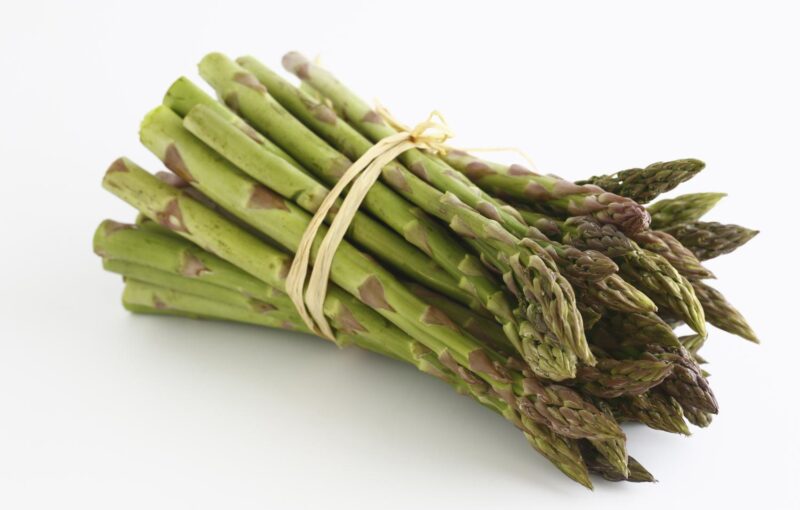Asparagus – a Vegetable Worth Stalking

I’ve been a dietitian for over 20 years and the power of food still amazes me. Foods from the earth, like avocados, arugula, and asparagus, are quite literally life-giving foods! They are packed with vital nutrients essential for the health of your body—nutrients you simply cannot get by following a SAD diet (standard American diet).
The SAD way of eating means the bulk of the diet is made up of heavily processed convenience foods loaded with salt, sugar, and inflammatory fats—substances that rob your body of good health. Even sadder is how these foods trigger your brain to release opioids and dopamine—both feel-good chemicals that actually compel you to overeat. So you see, frequent consumption of calorie-dense, processed foods may alter your brain responses in a way that makes you eat more.
Even if your stomach hasn’t seen a vegetable in years, the human body is super resilient and will adapt to prefer more wholesome foods…but only if it’s fed more wholesome food.
The Life-Giving Power of Asparagus
Unlike carrots and potatoes, asparagus probably isn’t a staple vegetable in your kitchen. However, you might want to consider adding it to your list because it’s loaded with important vitamins, such as vitamin K. Just one cup of cooked asparagus meets your vitamin K needs for the day, an essential nutrient involved in blood clotting and bone health. So if you happened to scrape up your knees after falling off your bike, vitamin K protects you from bleeding out, and at the same time safeguards your bones. Life-giving? Yes, I’d say so!
Asparagus also happens to be rich in prebiotic fiber, a type of fiber that acts like “food” to support the growth of healthy bacteria in your gut.
Asparagus: Storage and Cooking
Asparagus is one of the first spring vegetables ready to harvest in Ohio. It begins to pop out of the ground in early April. Fresh asparagus comes in three varieties: green, white, and purple. You can also find it in frozen and pickled forms!
To store fresh asparagus, place the ends upright in a shallow tray of water. This will keep them sweet and tender.
Asparagus can be boiled, steamed, roasted, sautéed, broiled, grilled, and pan-roasted. It cooks up in minutes and can be added to salads, pizzas and stir-fries! Just be sure to snap off the woody, inedible ends of asparagus before cooking.
Here are some ideas to get you started:
- Lightly steam or sauté asparagus and fold into omelets or frittatas along with mushrooms and onions.
- Check out this week’s recipe for Triple Green Power Salad, a nutritious and delicious combination of three green vegetables: asparagus, arugula, and sugar snap peas!
- Roast a tray of asparagus and enjoy as a colorful side dish alongside baked salmon.
Food for thought …
Boiled asparagus will turn soggy if overcooked. Boil for 2-4 minutes tops then remove it from the water and add directly to an ice bath (a big bowl full of ice water) to halt the cooking process. The final product will be crisp in texture with a bright green color!


